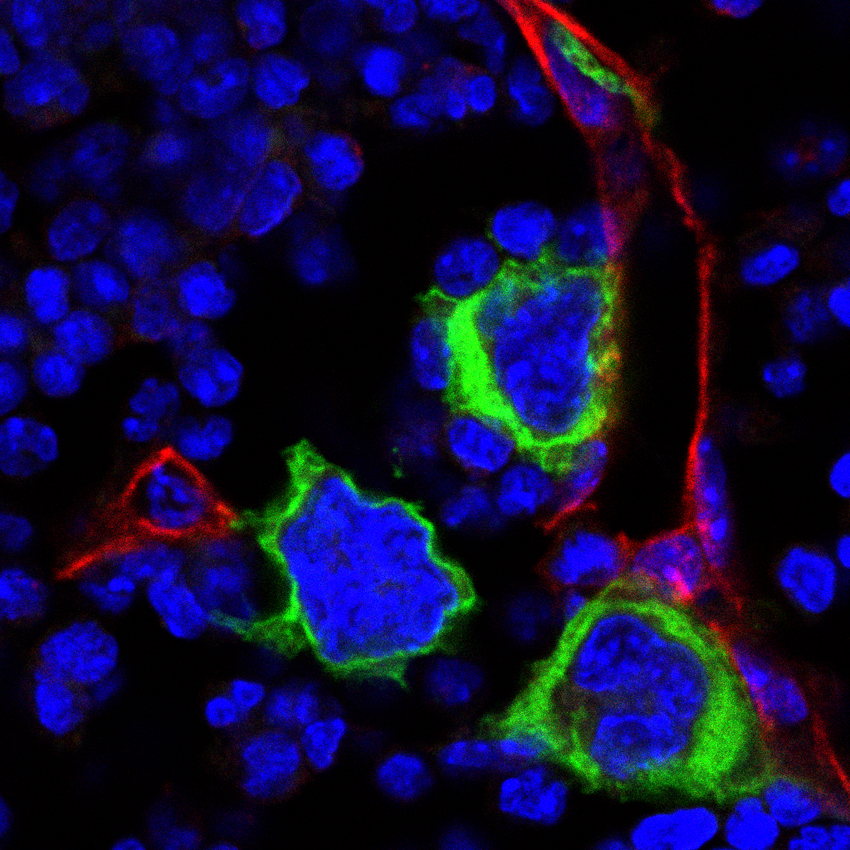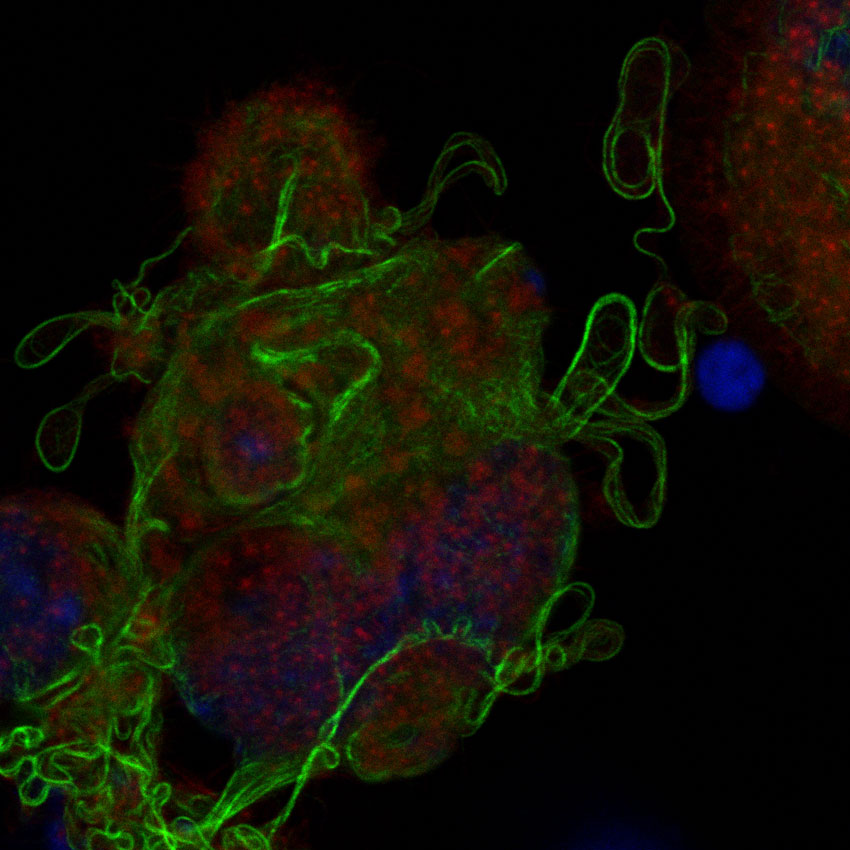Megakaryocyte and platelet group
at the Department of Experimental Biomedicine I, University Hospital Wuerzburg
At sites of vascular injury, circulating blood platelets come into contact with exposed subendothelial components and form a plug to prevent excessive blood loss. 1011 platelets are produced daily in the human body to fulfill the normal hemostatic function. The individual’s platelet count is maintained in a range of approximately 150.000-400.000/μL, requiring a constant balance of platelet production and clearance.
Platelets are produced by megakaryocytes in the bone marrow in a unique process in mammalian physiology. Megakaryocytes are localized in close proximity to sinusoidal blood vessels and convert their cytoplasmic, membranous network into long, cytoplasmic protrusions, which extend into the lumen of bone marrow sinusoids and finally platelets are sequentially released from their ends.
Conditions that cause insufficient platelet production or accelerated platelet clearance pose a risk for excessive bleeding. Unraveling the mechanisms involved in platelet formation would provide new options for therapeutic interventions.
Platelet formation is a highly cytoskeletal mechanics driven process. Thus, we mainly focus on the cytoskeleton components and cytoskeleton-regulatory proteins to identify their role in powering platelet formation. Our findings could open up new opportunities for the early detection and treatment of diseases caused by a platelet formation defect.
After platelets are released from their precursor cells, platelets circulate in the bloodstream and survey the integrity of the vessel wall. However, if platelet aggregation occurs in an uncontrolled manner, it may also lead to thrombotic events causing life-threatening disease states such as myocardial infarction or ischemic stroke, which are the leading causes of disability and mortality in the Western world. Therefore, there is still a strong demand for the development and production of selective, powerful, yet safe antithrombotic drugs. Hence, our second research focus is about identifying key molecules involved in hemostasis and pathological thrombus formation.


